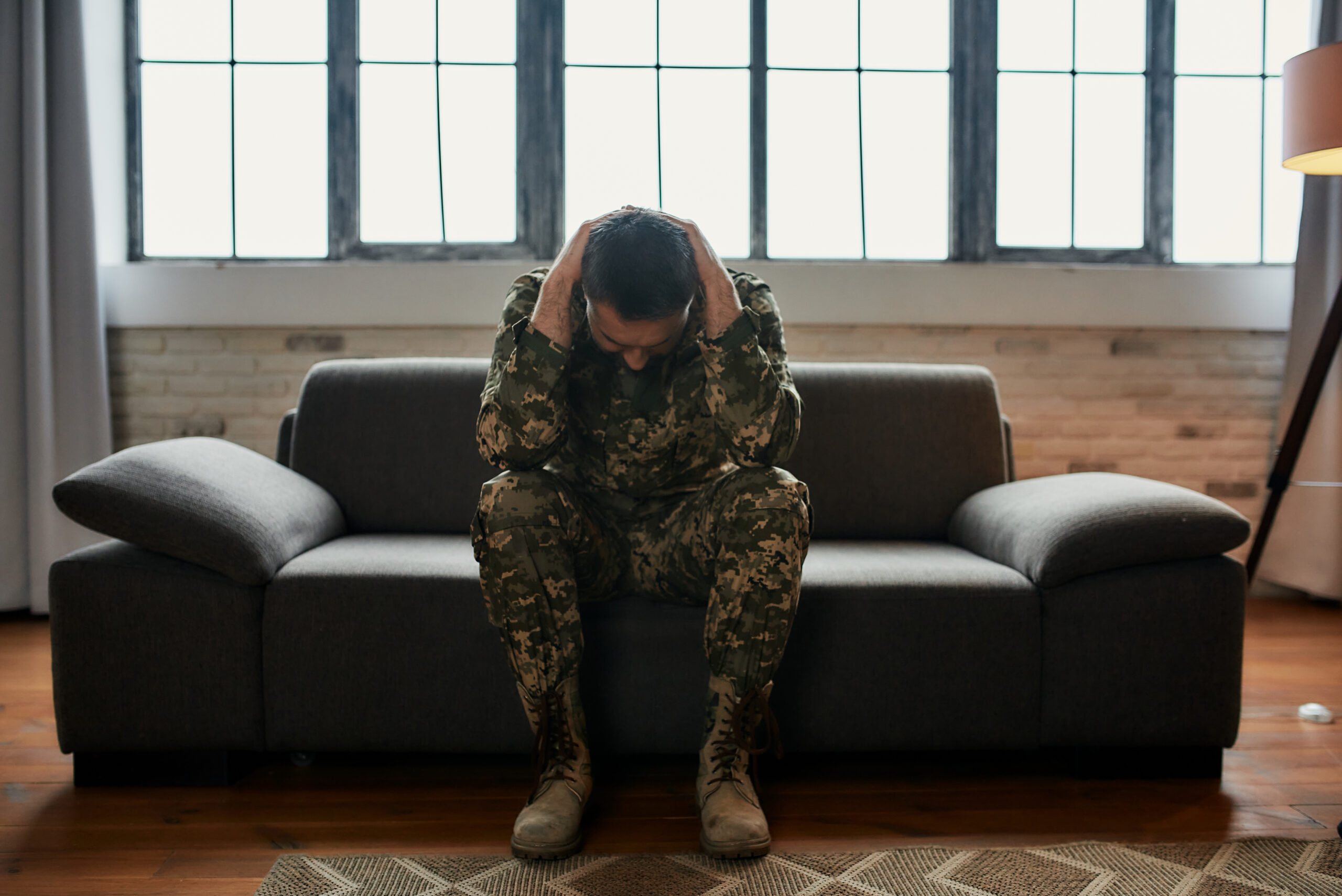Trauma vs. PTSD

Trauma in Veterans
Trauma is an emotional response to an event or incident such as an accident, injury, natural disaster or sexual assault. Living through a traumatic event might lead to adverse effects on your mental, emotional, physical, social and/or spiritual well-being.
Among veterans of war, trauma is common. A 2014 study of 3,157 United States veterans found that 87 percent had been exposed to at least one traumatic event. The veterans in the study reported an average of 3.4 traumatic events during their lifetime.
Immediate, short-term reactions to a traumatic event might include shock and denial. In the longer term, you might experience other symptoms, such as—unpredictable emotions, flashbacks, relationship issues, headaches and nausea, as a result of trauma.
Veterans are at an increased risk of experiencing trauma through exposure to the following:
- Combat
- Living in a war zone
- Sexual assault
- Violence
- Abuse
- Terrorism
Not every veteran will experience trauma the same way, some may only suffer from short-term reactions while others suffer from long term over the same type of trauma.
Are Trauma and PTSD the Same?
Following a traumatic event, it’s normal to experience changes in your usual thoughts, behaviors and emotions. However, if these changes last longer than four weeks and begin to interfere with your functioning at work, in relationships and in your daily life, you might have post-traumatic stress disorder (PTSD). Trauma can also lead to anxiety and depression, which may or may not co-occur with PTSD.
Although trauma and PTSD are often intertwined, it’s important to distinguish between the two. Not all veterans who experience traumatic events go on to be diagnosed with PTSD. The primary difference between trauma and PTSD is time. While the effects of trauma typically resolve after a few weeks, PTSD is a long-term condition in which symptoms persist, causing ongoing distress and disrupting your life.
You may be at increased risk of developing PTSD after trauma if the following factors apply to your situation:
- Intense or long-lasting traumatic event
- Injury during the traumatic event
- Trauma occurring during combat
- Sexual assault
- Previous exposure to trauma
According to the U.S. Department of Veterans affairs, PTSD is common among veterans, but its prevalence varies by service era. In any given year, the approximate percentage of veterans who have PTSD by service era is as follows:
- 11-20 percent of veterans who served in Operations Iraqi Freedom and Enduring Freedom
- 12 percent of veterans who served in the Gulf War (Desert Storm)
- 30 percent of Vietnam War veterans
Your unique experience during combat might contribute to PTSD and other mental health conditions. Additional factors that can influence whether or not you develop PTSD after war include—combat strategies, politics around the war, socio-cultural dynamics and geographic location.
Spending long periods of time away from home can cause additional stressors at home or work.
Signs and Symptoms of PTSD
PTSD symptoms may not appear until months or years after the traumatic event. While symptoms may present differently depending on the individual and situation, the following are common signs of PTSD:
- You relive or re-experience the traumatic event through nightmares or flashbacks. These can be triggered by seeing, hearing or smelling something that reminds you of the traumatic event.
- You avoid situations, people or places that remind you of the traumatic event. You might even avoid thinking about or discussing the event.
- You experience more negative thoughts and feelings than you did prior to the traumatic event. For example, you might—lose interest in things you once enjoyed, lose trust in other people, feel guilt, shame or regret related to the traumatic event.
- You’re always on edge, jittery or alert. This symptom is known as hyperarousal or hypervigilance. You might be easily irritated or startled, have difficulty sleeping or concentrating and develop unhealthy coping mechanisms such as substance use or aggressive driving.
Diagnostic Criteria for PTSD
To meet the diagnostic criteria for PTSD, an individual must have had exposure to actual or threatened death, sexual violation or serious injury. Even if you did not experience the traumatic event firsthand (for example, if you witnessed one of the aforementioned types of incidents), you may still be diagnosed with PTSD.
In addition, the following factors must also be present for a PTSD diagnosis to apply:
- At least one symptom of intrusion, i.e. recurrent distressing memories of the trauma
- Persistent avoidance of stimuli associated with the traumatic event, beginning after the trauma occurred
- Negative changes in mood or cognition, beginning or worsening after the trauma occurred
- Significant changes in arousal and reactivity associated with trauma
Symptoms must last for more than one month and impair a person’s ability to function in their daily life. You can view the complete diagnostic criteria for PTSD according to the Diagnostic and Statistical Manual of Mental Disorders here.
Trauma-Informed Care
If you or someone you know is suffering after experiencing trauma while serving our country, contact us to learn more about how Pyramid Military Therapy & Recovery programs can help.
Our trauma-informed care approach provides comprehensive treatment, leading to positive outcomes for veterans with trauma and PTSD as well as co-occurring disorders such as depression, anxiety, substance use, and moral injury. Trauma-informed care means that clinicians understand the pervasive nature of trauma and recognize the impact that it has on an individual’s functioning and quality of life.
Pyramid Military Therapy & Recovery programs focus on the whole health of the person, not just on treating the symptoms of trauma. Our trauma-informed care provides a safe and supportive environment for veterans with trauma and PTSD.


